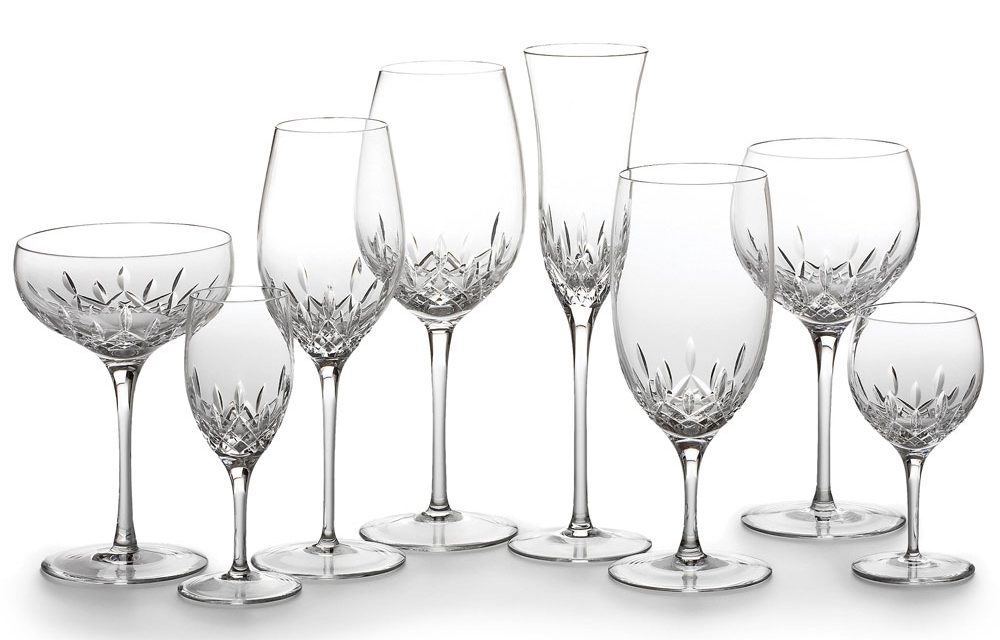“It’s is difficult to enjoy a good wine in a bad glass” – Evelyn Waugh
Glass stemware is a drinking vessel made with a bowl that rests on a stem, a shape anchored by a foot. The purpose of stemware is to serve cool beverages, such as water, ice tea, and wine. Just as a cup handle protects fingers from heat, the stem provides a way to hold cool drinks without warming the content of the bowl. The exception is the brandy snifter, a vessel cradled in the palm of the hand to enhance the flavor of brandy, whose taste is improved by heat.
White Wine Glass
The white wine glass is made with a bowl slightly smaller in diameter and with sides a little straighter than a red wine glass, a shape that concentrates the flavor and releases the delicate bouquet. Towards this end, approximately 3 ounces of white wine are poured into the glass.
The flavor of white wine ranges from dry to sweet. Dry white wine is high in acidity and complements appetizers and light foods, such as fish, chicken, fowl, veal, eggs, and fruit. But exceptions do exist.
Sweet flavor of dessert wines, such as Riesling, sauterne, and Muscat pairs nicely with sweet desserts, such as cake, fruit tarts, and berries.
Red Wine Glass
Compared to the delicate bouquet of white wine, the bouquet of red wine is quite pronounced. To release the abundant aroma, red wine is served in a glass with a slightly larger bowl and a little taller overall than the white wine glass. The red wine glass is known by various names, the claret glass, the burgundy glass, the Paris glass & the magnum wine glass.
They dry robust flavor of red wine cuts the rich flavor of food with high-fat content, such as red meat, duck, or game. A tart astringent taste also compliments textured foods, such as cheese and pasta.
Magnum Wine Glass
The magnum wine glass, from the Latin word magnus, “great,” is an oversized wine glass with an inward-curved rim. Reserved for an aromatic burgundy with an abundant bouquet, this glass holds 8 to 10 ounces or more when filled half full.
Dry wines, such as burgundy, contain less than 0.5 percent residual sugar and compliment foods served as the main cause.
Champagne Glass
The champagne glass is made in seven shapes, the tulip, the flute, the trumpet, the saucer, sherbet, coupe & hollow-stem.
The fluted shape accommodates the slow rise of bubbles to the rim, a form that promotes effervescence, and prolongs the cool temperature at which champagne taste best.
Sparkling wines, such as champagne, are both dry and sweet. Dry sparkling wine is served as an aperitif before dinner and as table wine to accompany a meal or a particular course. Sweet sparkling wine is reserved for dessert.
It is known as a wine of wit, a drink appropriate for special occasions.
Optimize Your Business Image!
Get A Free Consultation






